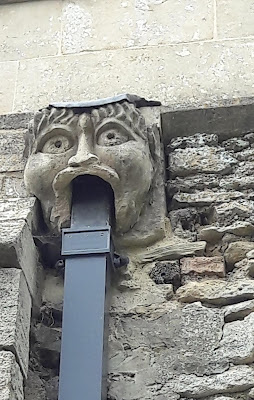These signs can often be found on the village green, or at the entrance of the village, they are also found in the centre of the village be it a busy high street or a quiet leafy lane. They come in all different shapes and sizes, some carved in oak, some painted in bright fresh colours and others left showing only the natural timber. The designs can be simple others very elaborate, some being very old while some were erected more recently commemorating jubilees or the millennium. Most village signs are made from timber though I have been lucky enough to have found one wonderful example made from beautifully crafted steel. Above is the sign of Coveney showing Aethelswyth daughter of the Noble Saxon Oswl, who went to Coveney with her maidens to work on her embroidery and weaving in the early 11th century.
Above is the beautifully crafted steel village sign of Walpole Saint Andrew, the only one I have found made in this way and what a stunning piece it is too. It depicts the parish church and a steam tractor, much used in the late Victorian and Edwardian periods. Below are a few more examples that I have discovered in the lovely fen villages that my cycling takes me through.
Welney sign features the village tradition of skating upon the frozen washes.
Marshland St James and Tilney All Saints village signs both depict the legend of Tom Hickathrift the marshland giant and his battle against the ogre.
Wimbotsham village sign shows the parish church and a WW2 Sterling bomber which is a reference to the RAF station at Bexwell.
Manea village sign depicts the big heavy horses who were used to plough the dark rich soil of the fens.
Emneth village sign shows a wonderful picture of village life, note the apples depicting the huge fruit orchards that once surrounded the village and the strawberries that depict the many acres of soft fruit that were grown in and around Emneth. Also we see the windmill in the background a feature found in or near most fen villages.

































